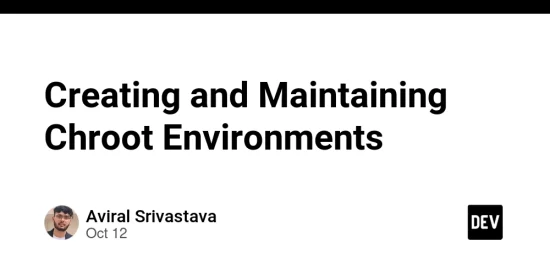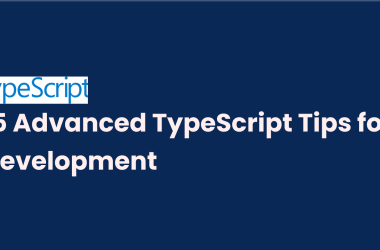Creating and Maintaining Chroot Environments: A Comprehensive Guide
Introduction
A chroot environment, often referred to as a “change root,” is a mechanism that isolates a specific process and its dependencies from the rest of the system. It effectively creates a virtualized file system root for the process, preventing it from accessing files and directories outside of the designated directory. This isolation is achieved by changing the root directory of a running process to a specific directory within the file system.
Chroot environments offer a valuable tool for various purposes, ranging from development and testing to security and recovery. Understanding how to create and maintain them is crucial for system administrators, developers, and anyone looking to enhance the security and stability of their systems.
Prerequisites
Before diving into the creation process, ensure you have the following prerequisites:
- Root privileges: Creating and manipulating chroot environments usually requires root privileges due to the system-level changes involved. Use
sudoor log in as root to execute the necessary commands. - Basic Linux knowledge: Familiarity with Linux commands, file system structure, and package management is essential.
- Package management tools: Your Linux distribution’s package manager (e.g.,
aptfor Debian/Ubuntu,yumfor CentOS/RHEL,pacmanfor Arch Linux) is needed to install required packages within the chroot environment. - Sufficient disk space: The chroot environment requires enough disk space to accommodate the necessary files and dependencies.
Advantages of Chroot Environments
- Security Isolation: The most significant advantage is improved security. By confining a process to a specific directory, chroot limits the damage a compromised process can cause. Even if an attacker gains control of the process, they are restricted to the chrooted environment and cannot access sensitive system files or affect other processes.
- Development and Testing: Chroot environments are ideal for testing software in a controlled environment. You can simulate different operating systems or dependency configurations without impacting the host system. This is particularly useful when testing applications that might modify system files or require specific library versions.
- Software Building: Building software within a chroot environment ensures that the build process relies only on the specified dependencies. This helps create portable and reproducible builds that are less likely to be affected by the host system’s configuration.
- Recovery and Troubleshooting: In case of system failures or corruption, a chroot environment can be used to boot into a minimal system and perform recovery operations. You can repair damaged files, reinstall packages, or diagnose problems without risking further damage to the host system.
- Legacy Application Support: Chroot environments can be used to run older applications that rely on specific libraries or configurations that are no longer available or compatible with the host system.
Disadvantages of Chroot Environments
- Not a True Virtualization: Chroot is not a complete virtualization solution. Processes within the chroot environment still share the host system’s kernel. Therefore, it does not provide the same level of isolation as virtual machines or containers.
- Complexity: Creating and configuring chroot environments can be complex, especially for beginners. It requires careful planning and attention to detail to ensure that all necessary dependencies are included.
- Performance Overhead: While typically minimal, there can be a slight performance overhead associated with chroot environments, as the system needs to translate file paths and manage the isolated file system.
- Security Vulnerabilities: While chroot improves security, it is not a foolproof solution. Certain vulnerabilities can allow processes to escape the chroot environment. Kernel exploits can bypass chroot restrictions. Regular security updates and proper configuration are crucial.
- Maintenance: Maintaining chroot environments can be time-consuming, especially if you need to update packages or manage dependencies.
Creating a Basic Chroot Environment: Step-by-Step
Here’s a practical guide to creating a basic chroot environment:
-
Create a Directory:
Choose a directory where the chroot environment will reside. For example:sudo mkdir /opt/chroot -
Install Basic Utilities:
Copy essential utilities and libraries into the chroot directory. These are required for basic system operations:sudo cp /bin/bash /opt/chroot/bin sudo cp /bin/ls /opt/chroot/bin sudo cp /bin/mkdir /opt/chroot/bin sudo cp /bin/rm /opt/chroot/bin sudo cp /lib64/ld-linux-x86-64.so.2 /opt/chroot/lib64 # Adjust for your system architecture sudo cp /lib64/libc.so.6 /opt/chroot/lib64 # Adjust for your system architectureImportant: Adjust the
/lib64path based on your system architecture (e.g.,/libfor 32-bit systems). Useldd /bin/bashto find the required libraries forbash. -
Create Essential Directories:
Create necessary directories within the chroot environment, such as/dev,/proc,/tmp, and/home:sudo mkdir /opt/chroot/dev sudo mkdir /opt/chroot/proc sudo mkdir /opt/chroot/tmp sudo mkdir /opt/chroot/home -
Mount Virtual Filesystems:
Mount the/dev,/proc, and/sysvirtual filesystems:sudo mount --bind /dev /opt/chroot/dev sudo mount --bind /proc /opt/chroot/proc sudo mount --bind /sys /opt/chroot/sys -
Enter the Chroot Environment:
Use thechrootcommand to change the root directory:sudo chroot /opt/chroot /bin/bashYou are now inside the chroot environment.
-
Optional: Create a User Account:
If you want to create a user account within the chroot environment:adduser -
Exit the Chroot Environment:
Typeexitto return to the host system. -
Unmount Virtual Filesystems:
Before removing the chroot, unmount the bound directories:
sudo umount /opt/chroot/dev sudo umount /opt/chroot/proc sudo umount /opt/chroot/sys
Maintaining a Chroot Environment
Maintaining a chroot environment involves several tasks:
-
Package Management: Use your distribution’s package manager within the chroot to install, update, and remove software. For example, in a Debian/Ubuntu-based chroot:
sudo chroot /opt/chroot apt update sudo chroot /opt/chroot apt install -
User Management: Manage user accounts, passwords, and permissions using standard Linux commands like
adduser,passwd, andchmodwithin the chroot environment. -
Configuration: Configure applications and services within the chroot environment as needed.
-
Security Updates: Regularly update the packages within the chroot environment to address security vulnerabilities.
-
Cleanup: Remove unnecessary files and directories from the chroot environment to conserve disk space.
Using debootstrap for Debian/Ubuntu
For Debian/Ubuntu systems, the debootstrap tool offers a more streamlined way to create chroot environments. It downloads and installs a minimal Debian/Ubuntu system into a specified directory.
sudo apt install debootstrap
sudo debootstrap --arch amd64 /opt/chroot
Replace bullseye, jammy). After debootstrap completes, you can chroot into the environment and configure it further. You’ll still need to mount /dev, /proc, and /sys.
Features for Enhancement
- Bind Mounts: Use bind mounts to share specific directories between the host system and the chroot environment. This allows you to access files and configurations from the host system within the chroot environment.
- Union Filesystems: Employ union filesystems (e.g., OverlayFS) to create a read-only base image for the chroot environment and overlay a writable layer for modifications. This simplifies updates and allows you to revert to the base image if needed.
- Automation: Script the chroot creation and configuration process to automate the setup of new environments.
Conclusion
Chroot environments are a versatile tool for enhancing security, enabling isolated testing, and managing system recovery. While not a complete virtualization solution, they provide a valuable layer of isolation and control. By understanding the principles and techniques involved in creating and maintaining chroot environments, you can leverage their benefits to improve the security, stability, and flexibility of your systems. Remember to prioritize security updates and proper configuration to mitigate potential vulnerabilities. Consider exploring more advanced tools like debootstrap and containerization technologies (e.g., Docker) for more sophisticated isolation needs.






